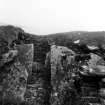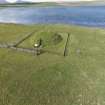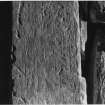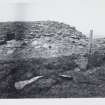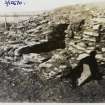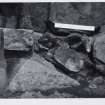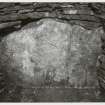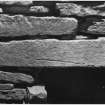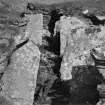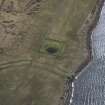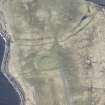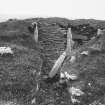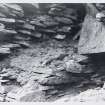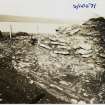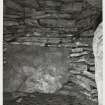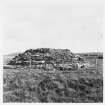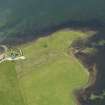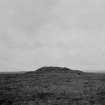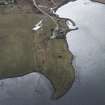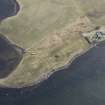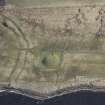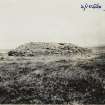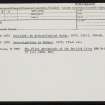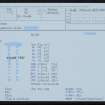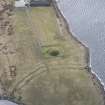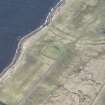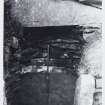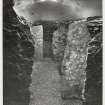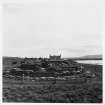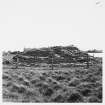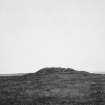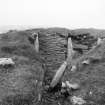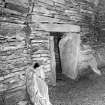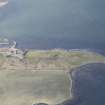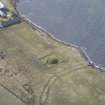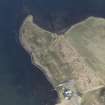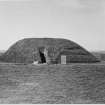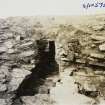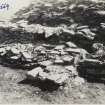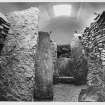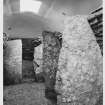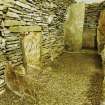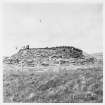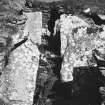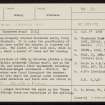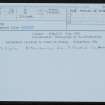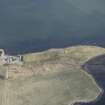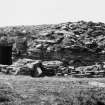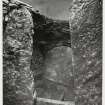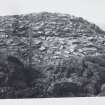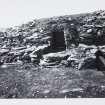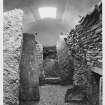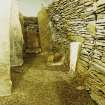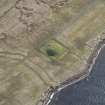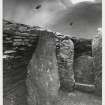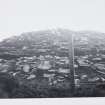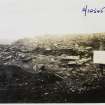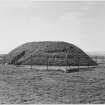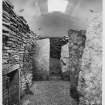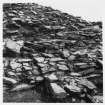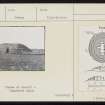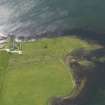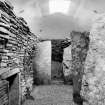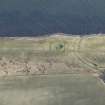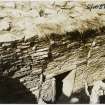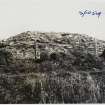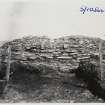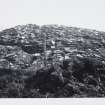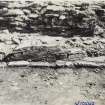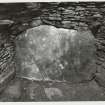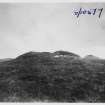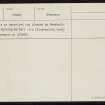Following the launch of trove.scot in February 2025 we are now planning the retiral of some of our webservices. Canmore will be switched off on 24th June 2025. Information about the closure can be found on the HES website: Retiral of HES web services | Historic Environment Scotland
Unstan
Chambered Cairn (Neolithic), Inhumation(S) (Early Neolithic), Rune Inscribed Stone (Norse), Arrowhead(S) (Flint)(Early Neolithic), Bowl (Pottery)(Early Neolithic), Scraper (Tool) (Flint)(Early Neolithic)
Site Name Unstan
Classification Chambered Cairn (Neolithic), Inhumation(S) (Early Neolithic), Rune Inscribed Stone (Norse), Arrowhead(S) (Flint)(Early Neolithic), Bowl (Pottery)(Early Neolithic), Scraper (Tool) (Flint)(Early Neolithic)
Alternative Name(s) Knowe Of Onston
Canmore ID 1740
Site Number HY21SE 5
NGR HY 2829 1172
Datum OSGB36 - NGR
Permalink http://canmore.org.uk/site/1740
- Council Orkney Islands
- Parish Stenness
- Former Region Orkney Islands Area
- Former District Orkney
- Former County Orkney
HY21SE 5 2829 1172.
(HY 2828 1172) Chambered Mound (NR)
OS 6" map, Orkney, 2nd ed, (1903).
An Orkney-Cromarty stalled chambered cairn, fully described by Henshall. It is under the guardianship of Historic Buildings and Monuments (HBM) who have roofed the chamber in concrete and turfed the mound. The lintel of the side cell, which is a replacement, bears a number of runes and the drawing of a bird.
The excavations of 1884 by Clouston (R S Clouston 1885) yielded a large number of neolithic potsherds (Unstan ware), which are now in the National Museum of Antiquities of Scotland (NMAS) (under E0 136-70), and several flint implements including leaf-and barbed-and-tanged arrowheads (NMAS E0 171-5). Remains of skeletons were found throughout the chamber. The compartment into which the passage opens contained several crouched skeletons and there were two others in the side cell.
A S Henshall 1963; RCAHMS 1946; V G Childe and W D Simpson.
A MOW plaque describes the cairn as the 'Knowe of Onston', although there are variations of the spelling. It is as described and planned by Henshall.
Resurveyed at 1/2500.
Visited by OS (RB) 11 May 1966.
Orkney-Cromarty round cairn with a stalled chamber.
J L Davidson and A S Henshall 1989.
HY 2828 1172 A watching brief was undertaken in May 2001 during the digging of a trench around Unstan Chambered Cairn (NMRS HY21SE 5), designed to take a new fence around the monument. The trench revealed no definite prehistoric remains.
Sponsor: Historic Scotland
D Murray and G Ewart 2001
HY 282 117 A watching brief was undertaken in May 2002 during the excavation of a new track and car parking area for Unstan chambered cairn (HY21SE 5). No significant archaeological discoveries were made.
Archive to be deposited in the NMRS.
Sponsor: HS
G Ewart and D Murray 2002
'The Orkney Herald' and 'The Orcadian' describe the excavation of the site in September 1884. 'The Orcadian' in 1907 mentions that the mound was still open to the elements.
M Howe 2006
Publication Account (1996)
This is the stalled cairn after which Unstan Ware was named, for its excavation in the late 19th century yielded sherds of at least thirty-five bowls of this distinctively shaped and decorated ware. It was built on a low-lying promontory on the south shore of the Loch of Stenness.
The circular cairn covers a chamber very similar to that at Isbister (no. 85): it is divided by upright slabs into three central compartments and two shelved end-cells, and a side-cell opens off the west wall of the central compartment. The lintel over the cell bears a brief runic inscription, but the stone is not in its original position (having been placed here during restoration); the fact that the runes are carved across the narrow face of the slab implies that it was once set upright. The bird and other doodles on the same slab have apparently been added since restoration this century.
Beyond the tomb, two lines of rampart and ditch cut off the tip of the promontory; nothing is known of the date of this fortified enclosure, an unusual monument for the Northern Isles, and it is not inconceivable that it might be neolithic.
Information from ‘Exploring Scotland’s Heritage: Orkney’, (1996).
Watching Brief (22 May 2001)
Kirkdale Archaeology were asked, under the terms of the call out contract, to monitor the digging of a trench around Unstan chambered cairn on Orkney, designed to take a new fence around the monument. The cairn is a fine example of an Orcadian Neolithic chambered cairn, excavated in 1884, and today open to the public. It appears as an oval grassy mound, orientated roughly NW-SE, and with an entrance passage to the NE. A square iron fence encloses this and is due to be replaced because rabbits have penetrated it and have begun to damage the monument. The trench revealed no definite prehistoric remains.
Sponsor: Historic Scotland
D Murray and G Ewart 2001
Kirkdale Archaeology
Watching Brief (29 April 2002 - 9 May 2002)
HY 282 117 A watching brief was undertaken in May 2002during the excavation of a new track and car parking area for Unstan chambered cairn (HY 21 SE 5). No significant archaeological discoveries were made.
G Ewart and D Murray 2002
Sponsor: Historic Scotland
Kirkdale Archaeology
Project (May 2007)
HY 285 140 The programme of geophysical investigations in and around the ‘Heart of Neolithic Orkney’ began in 2002 and to date approximately 240ha have been surveyed including this year’s season (Phases X) which started in May 2007 and is still ongoing. Gradiometry and resistance survey at the Point of Onston around the chambered tomb and within the fortified promontory have revealed a number of anomalies of archaeological interest although the data suggest that few remains exist beyond the visible earthworks. Resistance survey over Big Howe Broch has confirmed the ‘lightbulb’ shaped enclosure ditch suggested by previous gradiometer survey and has detected part of the tower which is approximately 30m in diameter. There is some suggestion of additional stone structures. Elsewhere gradiometer survey has detected numerous responses indicative of ridge and furrow cultivation. Some discrete areas of enhanced response have also been located which may be of archaeological interest.
Archive deposited with the Geophysics Unit, Orkney College.
Funder: Historic Scotland, Orkney Islands Council, Orkney Archaeological Trust, Orkney College Geophysics Unit.
Earth Resistance Survey (May 2007)
HY 285 140 A programme of resistance survey in and around the ‘Heart of Neolithic Orkney’ began in 2002 and to date approximately 240ha have been surveyed including this year’s season (Phases X) which started in May 2007 and is still ongoing.
Archive deposited with the Geophysics Unit, Orkney College.
Funder: Historic Scotland, Orkney Islands Council, Orkney Archaeological Trust, Orkney College Geophysics Unit.
Magnetometry (May 2007)
HY 285 140 A programme of magnetometry in and around the ‘Heart of Neolithic Orkney’ began in 2002 and to date approximately 240ha have been surveyed including this year’s season (Phases X) which started in May 2007 and is still ongoing.
Archive deposited with the Geophysics Unit, Orkney College.
Funder: Historic Scotland, Orkney Islands Council, Orkney Archaeological Trust, Orkney College Geophysics Unit.
Watching Brief (28 January 2013 - 29 January 2013)
HY 2829 1172 A watching brief was carried out, 28–29 January 2013, during the excavation of a narrow trench cut into the W-facing slope of the mound at Unstan Cairn. The work aimed to determine the depth and nature of deposits overlying the concrete cap sealing the monument’s original masonry, and to investigate the possibility of inserting some form of drainage. The excavation revealed that up to c1m of overburden had been placed above the concrete. A small part of what may have been original masonry was revealed and left undisturbed.
Archive: RCAHMS (intended)
Funder: Historic Scotland
Andrew Hollinrake, Kirkdale Archaeology, 2013
(Source: DES)
OASIS ID: kirkdale1-311442
Note (2020)
Unstan
This burial site in Orkney Islands was a focus for funerary practices in the Neolithic period, between 4000 BC and 3301 BC.
Prehistoric Grave Goods project site ID: 60071
CANMORE ID: 1740
Total no. graves with grave goods: 6
Total no. people with grave goods: 8
Total no. grave goods: 19
Prehistoric Grave Goods project Grave ID: 74013
Grave type: Chamber
Burial type(s): Inhumation
Grave good: Pot
Materials used: Pottery
Current museum location: National Museum of Scotland
Grave good: Animal Bone (Other)
Materials used: Bone/Antler/Horn/Ivory/Tooth (Animal) [Bone]
Current museum location: National Museum of Scotland
Grave good: Pot
Materials used: Pottery
Current museum location: National Museum of Scotland
Prehistoric Grave Goods project Grave ID: 74014
Grave type: Chamber
Burial type(s): Inhumation
Grave good: Flake
Materials used: Chert / Flint [Flint]
Current museum location: National Museum of Scotland
Grave good: Flake
Materials used: Chert / Flint [Flint]
Current museum location: Unknown
Grave good: Pot
Materials used: Pottery
Current museum location: National Museum of Scotland
Grave good: Scraper
Materials used: Chert / Flint [Flint]
Current museum location: National Museum of Scotland
Prehistoric Grave Goods project Grave ID: 74068
Grave type: Chamber
Burial type(s): Inhumation, Inhumation
Grave good: Pot
Materials used: Pottery
Current museum location: National Museum of Scotland
Grave good: Arrowhead
Materials used: Chert / Flint [Flint]
Current museum location: National Museum of Scotland
Grave good: Animal Bone (Other)
Materials used: Bone/Antler/Horn/Ivory/Tooth (Animal) [Bone]
Current museum location: National Museum of Scotland
Grave good: Pounder/Rubber (Unknown/Unspecified)
Materials used: Stone (Uncertain/Unspecified)
Current museum location: National Museum of Scotland
Grave good: Flake
Materials used: Chert / Flint [Flint]
Current museum location: National Museum of Scotland
Prehistoric Grave Goods project Grave ID: 74069
Grave type: Chamber
Burial type(s): Inhumation, Inhumation
Grave good: Pounder/Rubber (Unknown/Unspecified)
Materials used: Stone (Uncertain/Unspecified)
Current museum location: National Museum of Scotland
Museum accession no.: X.EO 184
Grave good: Flake
Materials used: Chert / Flint [Flint]
Current museum location: National Museum of Scotland
Prehistoric Grave Goods project Grave ID: 74070
Grave type: Chamber
Burial type(s): Inhumation
Grave good: Pot
Materials used: Pottery
Current museum location: National Museum of Scotland
Grave good: Pot
Materials used: Pottery
Current museum location: National Museum of Scotland
Prehistoric Grave Goods project Grave ID: 74071
Grave type: Chamber
Burial type(s): Inhumation
Grave good: Arrowhead
Materials used: Chert / Flint [Flint]
Current museum location: National Museum of Scotland
Grave good: Arrowhead
Materials used: Chert / Flint [Flint]
Current museum location: National Museum of Scotland
Grave good: Pot
Materials used: Pottery
Current museum location: National Museum of Scotland
Further details, the full project database and downloads of project publications can be found here: https://doi.org/10.5284/1052206
An accessible visualisation of the database can be found here: http://blogs.reading.ac.uk/grave-goods/map/


















































































